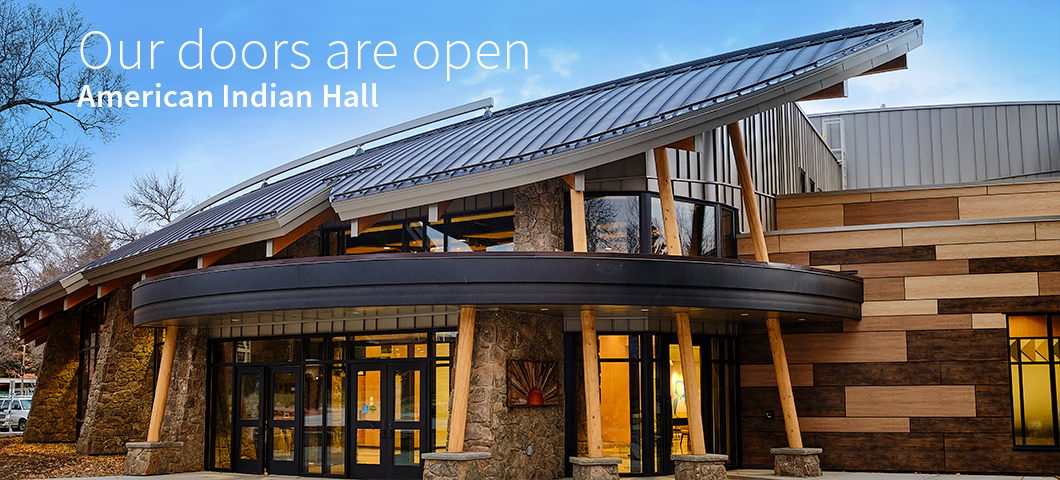Our Student Well-Being Model
Last Updated: June 2024
The Student Well-Being Model (SWBM)
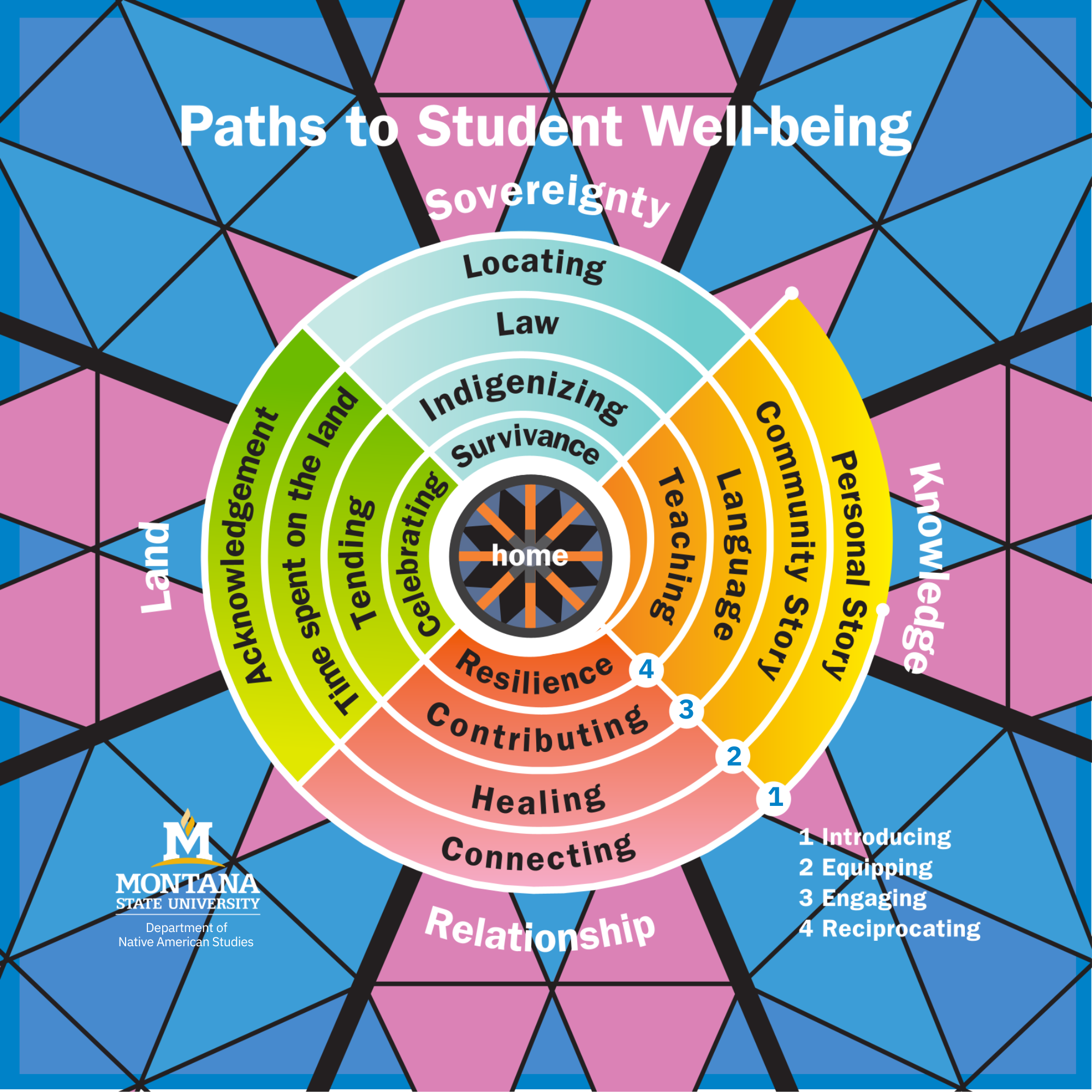
Our model idealizes paths to student well-being by articulating the identity work of Native students, faculty, and staff on their path to belonging within MSUs communities. The Student Well-Being Model (SWBM), identifies dimensions of H/home, where Indigenous reality heavily influences identity development. While Indigenous members of our MSU community are with us and away from their Home (family, community, culture, reservation), we offer an intentional and nurturing home at MSU by relying upon our cultural standards of Knowledge, Relationship, Land, and Sovereignty.
When building community, we find that nearly all people begin that process with their Personal Story. Located on the eastern quadrant, Personal Story invites everyone to enter into Knowledge as if entering a Tribal Lodge, through the eastern doorway. From here, we recognize that, while the path to home is clear, wellness isn't as neatly laid out and individuals will move freely and fluidly throughout the model based on their combined H/home experiences. By Introducing ourselves to these cultural standards, we can begin to Equip ourselves and others to empower wellness. This empowerment leads to Engagement with the community, eventually entering Reciprocity to promote wellness beyond the self.

Knowledge
Knowledge is the beginning of our journey in the SWBM. No one comes to college as a blank slate; they bring Knowledge learned from their families and communities. In this model, Knowledge is found in four key places: in personal stories, communal stories, native languages, and teaching others.
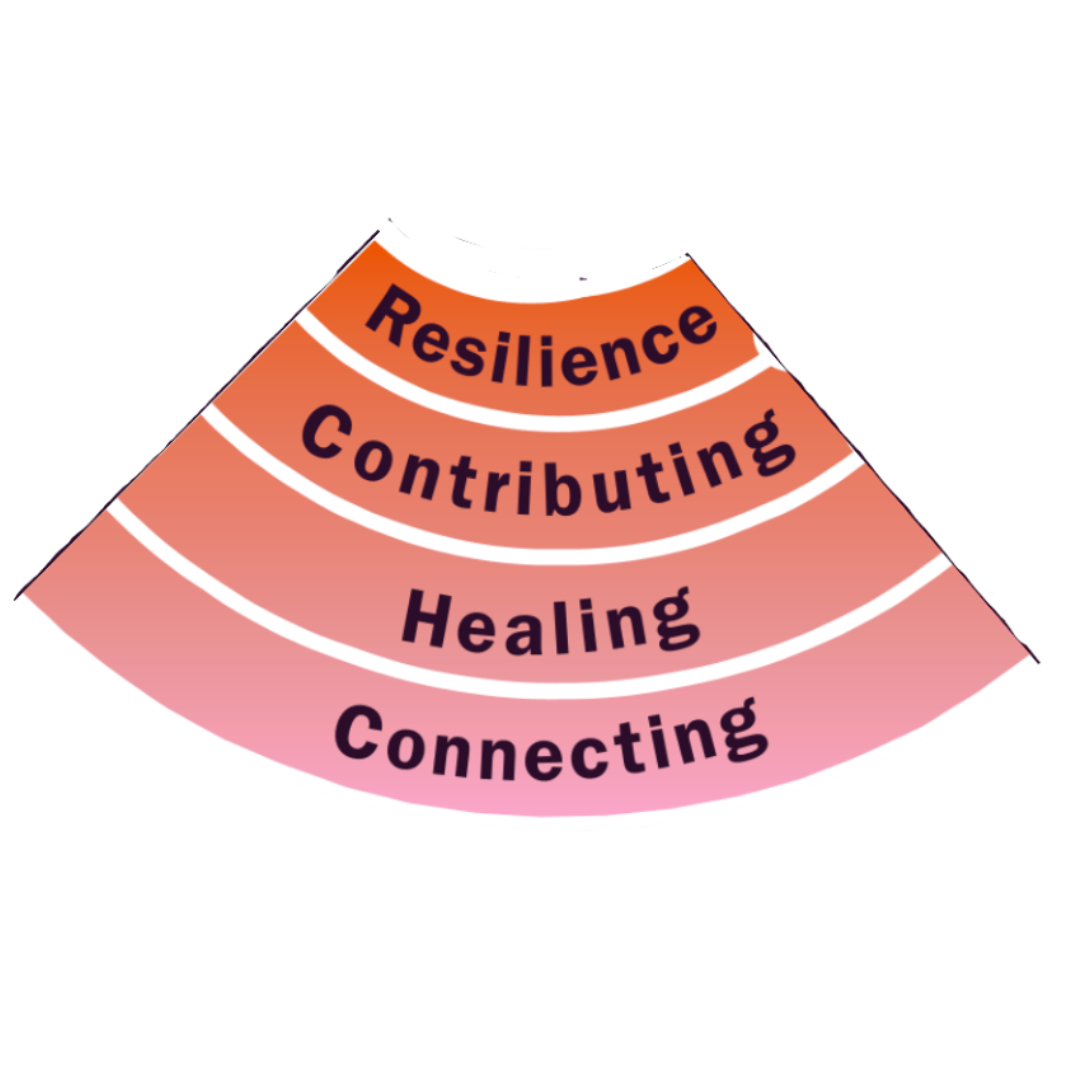
Relationship
Diverse relationships exist among American Indian peoples and communities. Additionally, the historical relationships of settler colonialism and Native relations are still active today. The SWBM shows four ways that relationships impact Indigenous realities: connecting, healing, contributing, and resilience.
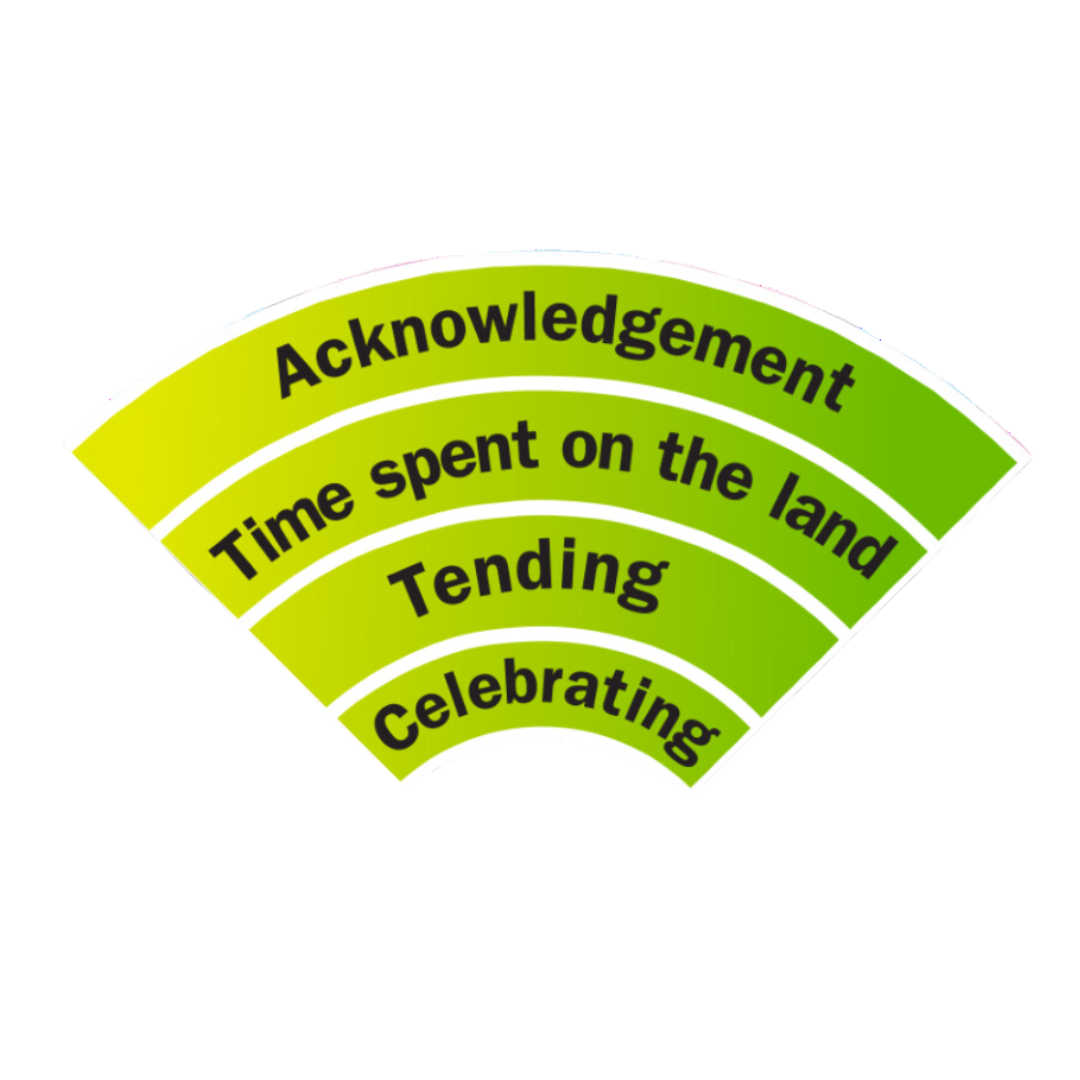
Land
MSU is situated on ancestral lands of Tribal Nations. Land, as a concept of wellness, impacts us individually as people who come from different lands, and communally as we exist at MSU. Land is thematically understood in 4 ways: land acknowledgement, time spent on the land, tending, and celebrating our connectivity to the land.
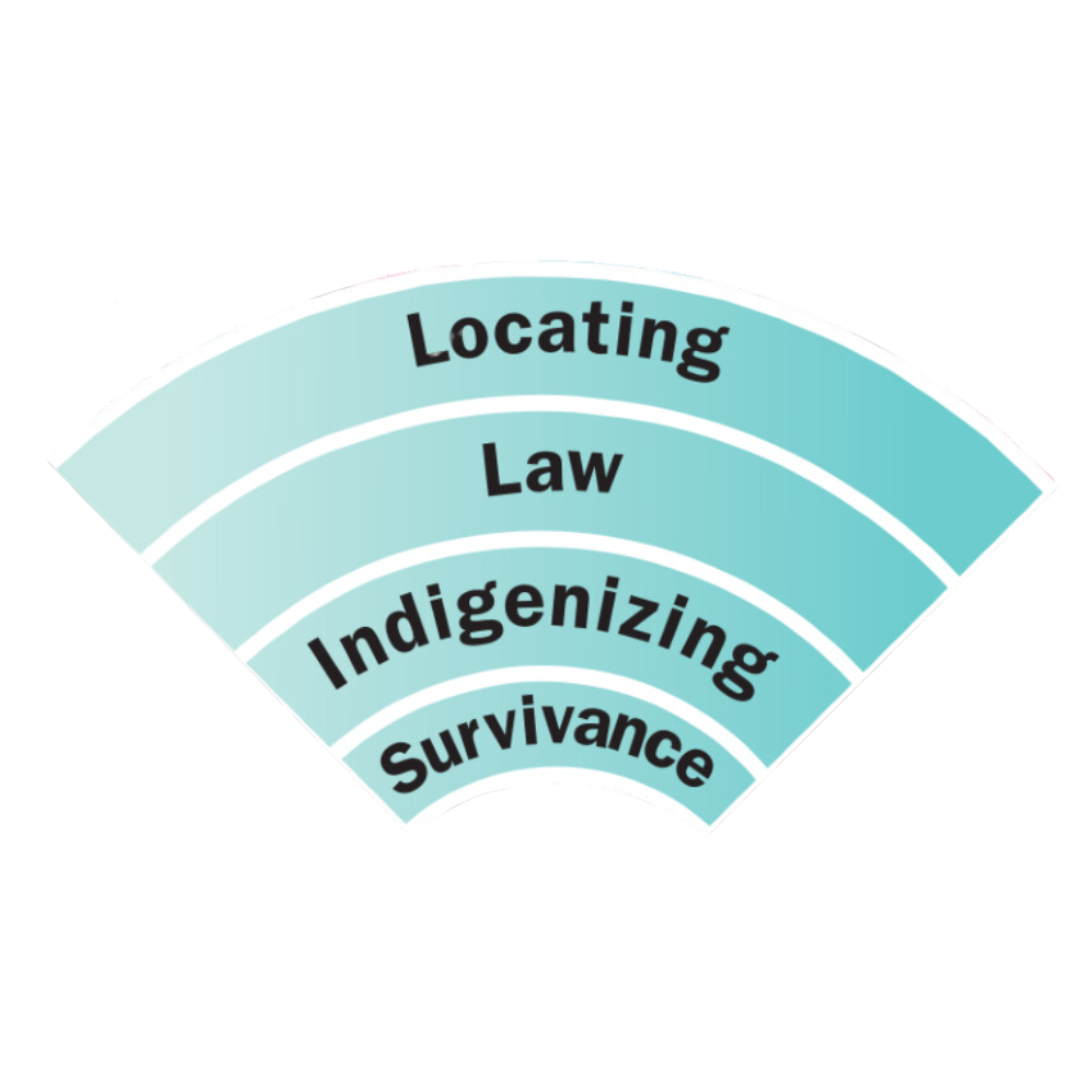
Sovereignty
Sovereignty, at its most basic understanding, is the right to make and enforce community laws and regulations. At the American Indian Hall, we uphold the sovereign rights of our students, faculty, and staff, as citizens of Native Nations, who maintain political distinction. Based on this, exercising Tribal Sovereignty is a tenet of wellness in our community. The SWBM outlines four ways that sovereignty can be supported: by locating yourselves with reference to the traditional owners of this land, through deepening our knowledge of Federal Indian and Tribal law and policy, by Indigenizing our spaces, thoughts, and actions, by celebrating the Indigenous resistance + survival that is survivance.
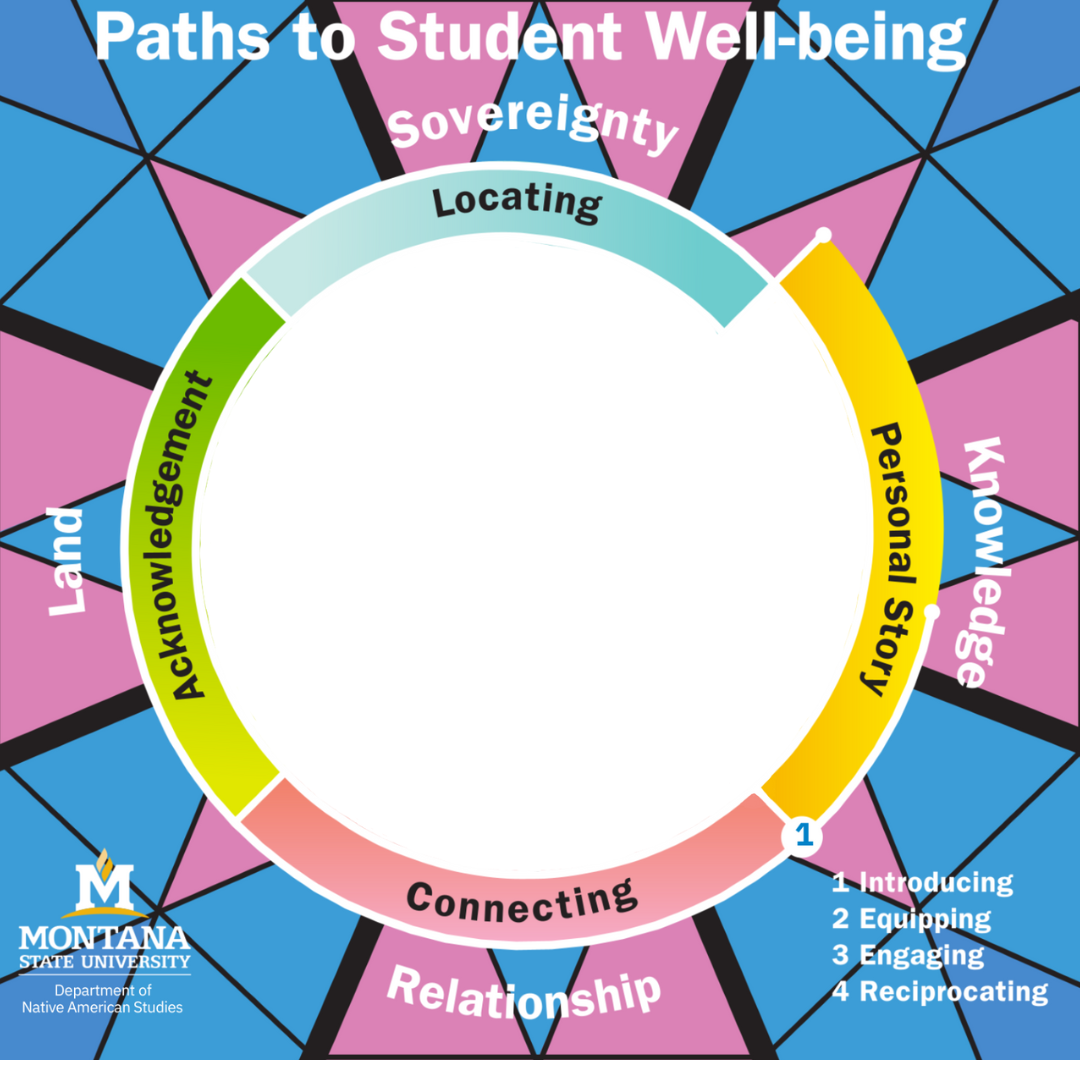
Introducing
In the outermost ring of the model, we envision everyone having the opportunity to introduce their knowledge themselves to the community, and vice-versa. Hence, the first concentric level of the model acknowledges that everyone enters this home away from Home with their personal stories, connecting with one another through relationships, acknowledging the land, and locating themselves through tribal sovereignty.
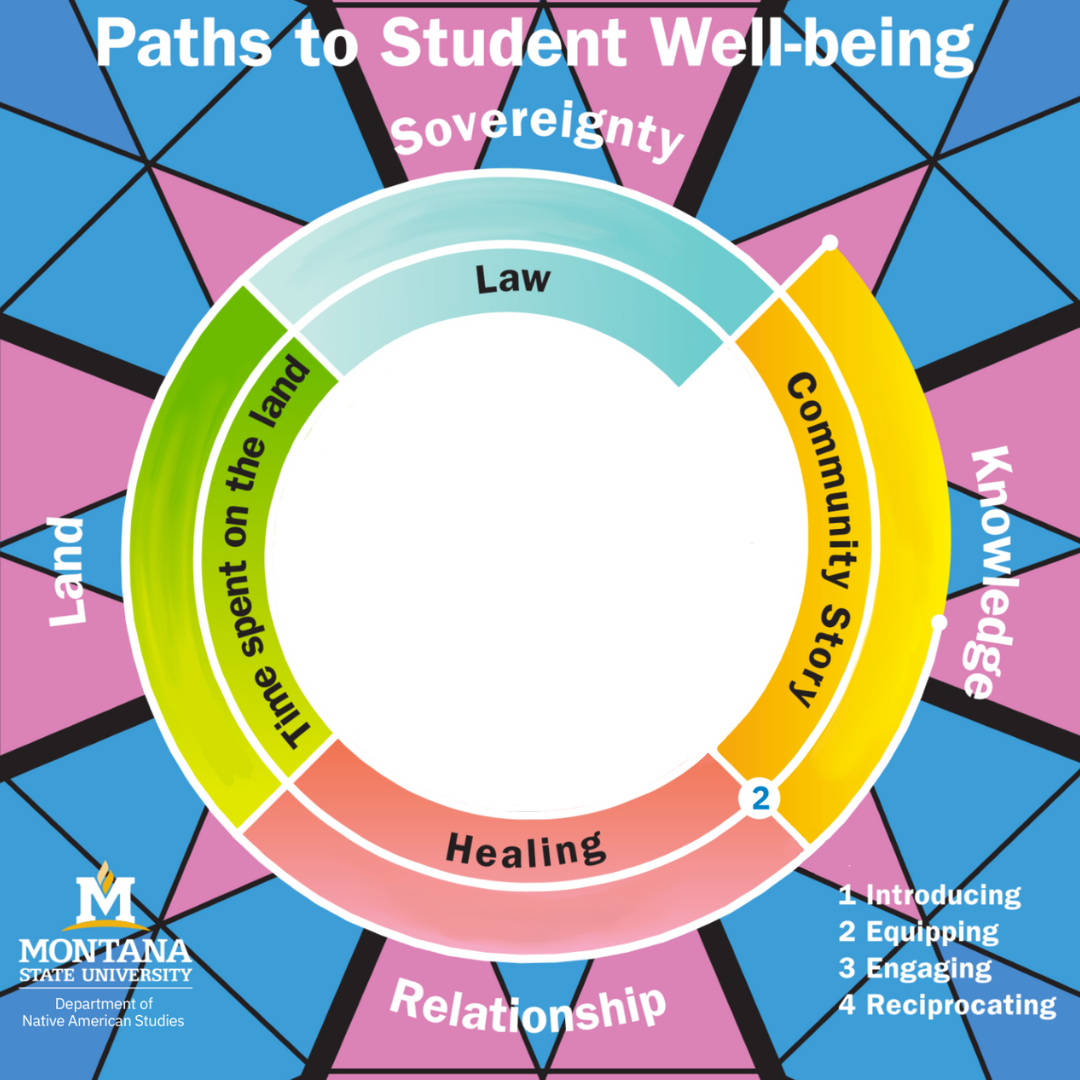
Equipping
In the models' second ring, students are envisioned equipping themselves with what is needed to aid their journey through college and beyond. Equipping is multidemnsional in that it aims to prepare them as scholars and for aspects of adulthood and community participation. The model's path of equipping asks travelers to pick up tools that will help them along their way, like knowledge of community stories, healing through relationships with others as well as with oneself, through time spent on the land, and individual as well as national sovereignty through law (whether western, tribal, or natural).
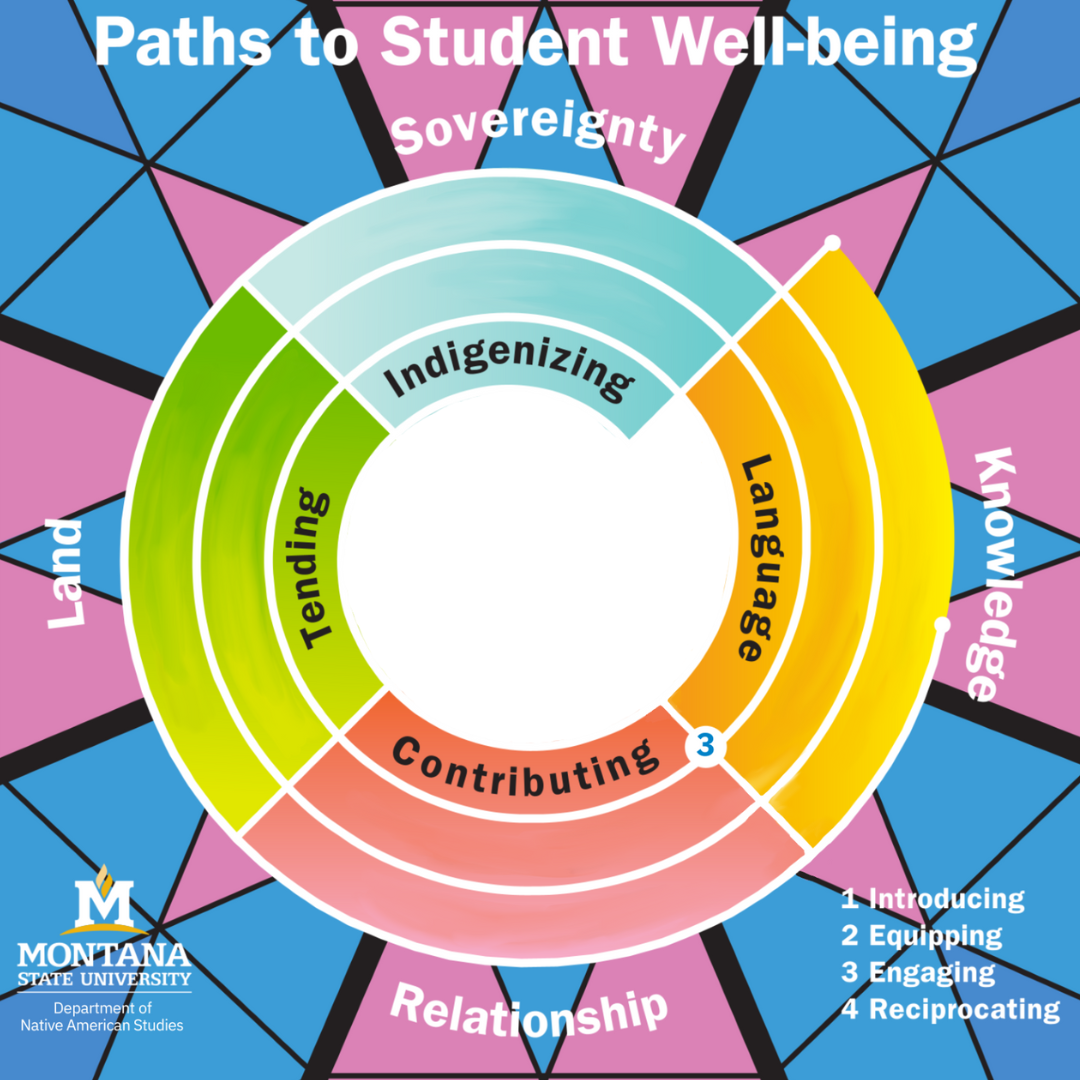
Engaging
In the third ring of the model, students are engaging: implementing and using the tools they picked up in the model's previous cycle. By engaging students make contributions, both academic and personal, meaningful and capable of lasting change within us and our communities. To follow the path of engaging in the SWBM, we start by engaging in traditional language, contributing through relationships, tending to the land, and indigenizing as an act of sovereignty.
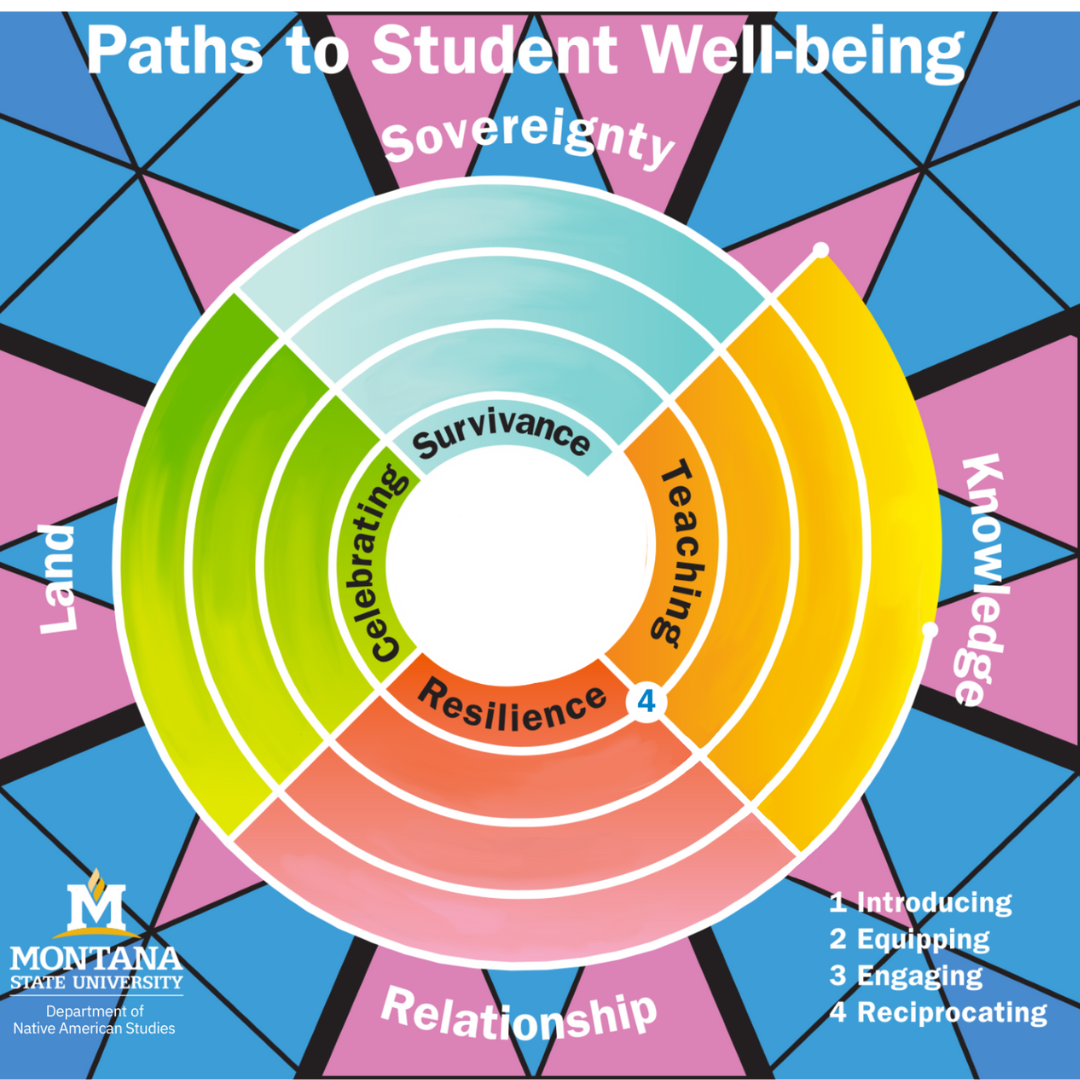
Reciprocating
In the fourth and innermost ring of the model, students are envisioned to be reciprocating: sharing, giving back, and actively participating in a communal experience of growth. As an ethical principle, reciprocity guides Indigenous lifeways in theory, method, and practice. The sustainability of systems we build relies on continuous reciprocity and support from the community. To walk the path of reciprocating in the SWBM, we follow these concepts: sharing knowledge through teaching; resilience as a person, community, and a department reliant upon the relationships we form; celebrating with and via the land, our original teacher; and survivance through the exercise of sovereignty, following the examples of Native nations in the ability to withstand, maintain, and thrive.
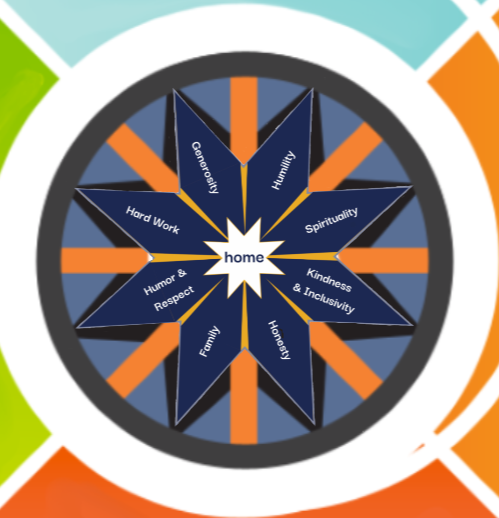
home
Situated at the heart of our SWBM, in the home of the American Indian Hall, is the Cultural Values Star. We aim to provide an education contextualizing students' cultures by weaving our Core Values into the physical environment of the AIH, where Indigenous students can find a sense of community. For us, the American Indian Hall is a nurturing, cultivated, home away from the diverse Homes where our students were raised. We acknowledge that students come from diverse backgrounds and ways of knowing. With their personal stories and cultural ways intact, students have the opportunity to make a home away from Home at MSU's American Indian Hall, where they can continue to practice their values and ways of knowing while engaging with other students, staff, and faculty who are doing the same.

